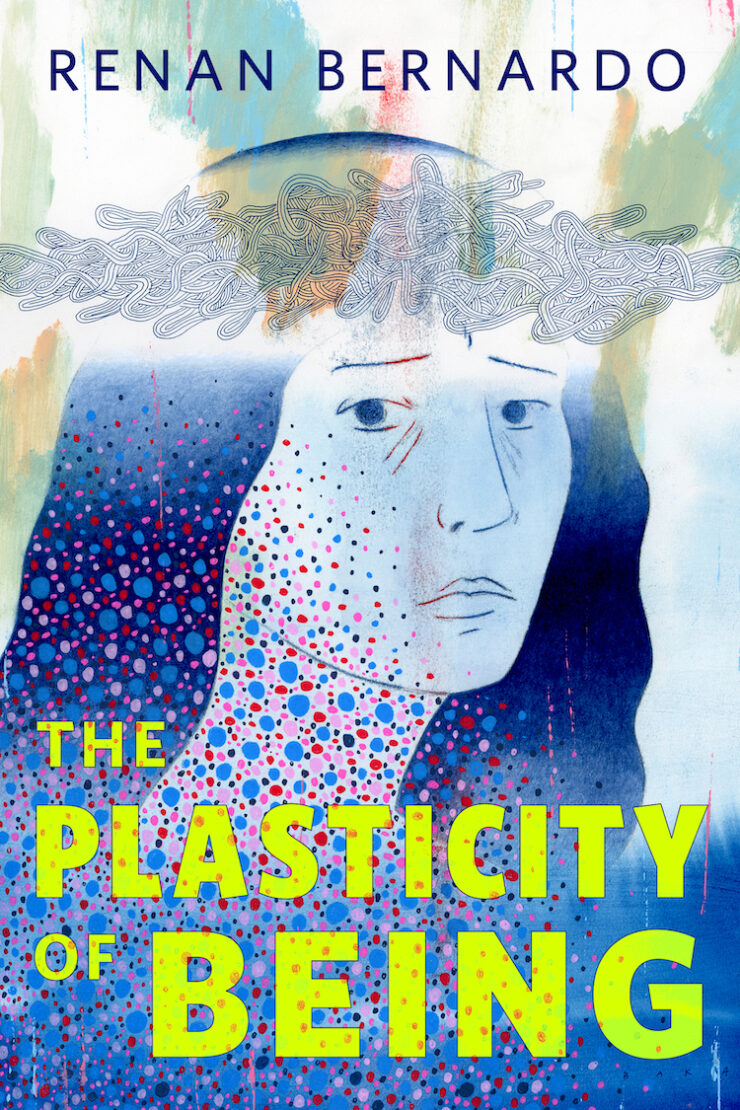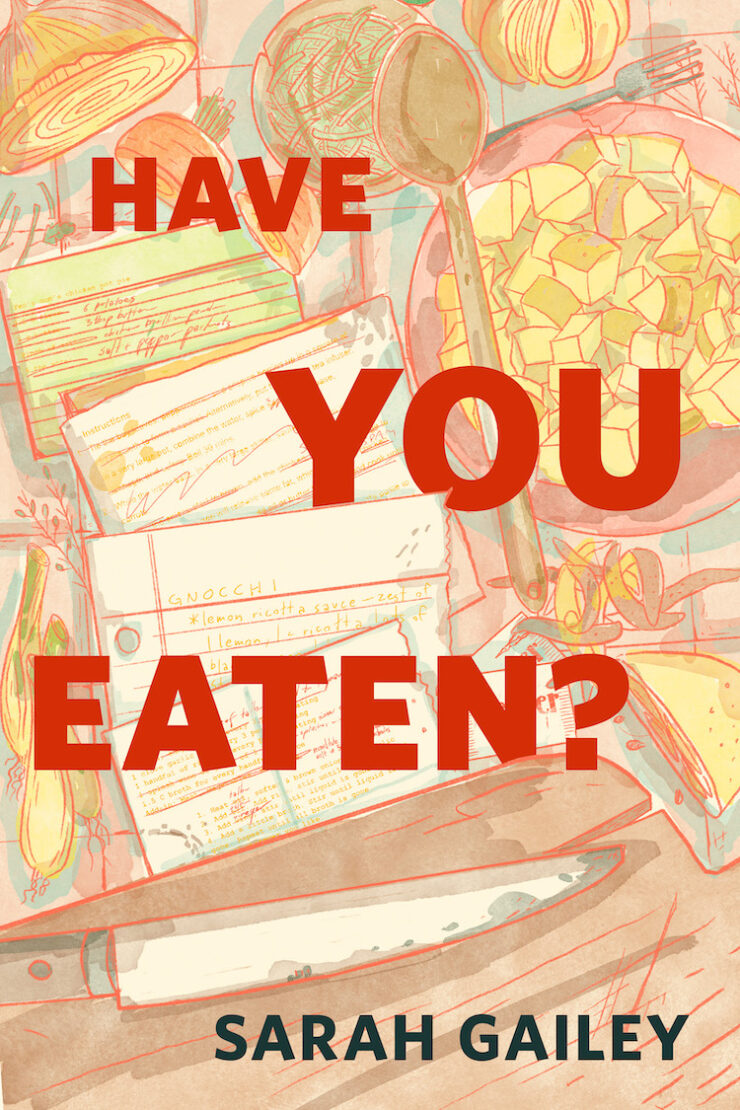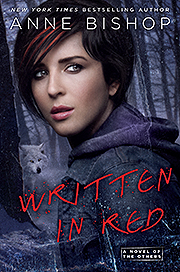As it turns out, successfully building an alternate Earth is a lot more complicated than changing a few place-names and dropping in paranormal characters to spice things up a little. In the hands of a more skilled writer, the alternate America of Written in Red could have been used as a setting for an interesting examination of race, gender, and the legacy of colonialism, but unfortunately it ends up being a fairly predictable urban fantasy with many elements that, on further examination, become increasingly problematic.
Written in Red takes place in an alternate North America known as Thaisia, where humans and Others live in uneasy truce—the Others being the terra indigene, the supernatural were-creatures, vampires, and far older beings that occupied the Thaisian continent—and most of the rest of the world, outside of Europe—long before the humans arrived. In larger cities, urban populations of Others live in designated neighborhoods known as Courtyards, where human law doesn’t apply and where trespassers with mischief on their minds may end up as “DLUs”—Deceased, Location Unknown—which generally translates as dinner for the Others.
One of these cities is Lakeside; heroine Meg Corbyn stumbles into the Lakeside Courtyard and, despite having no obvious skills or known background, into the job of Human Liaison, responsible for taking deliveries from the human-owned businesses that sell to the Courtyard’s residents. She is naive and unworldly, but a quick study and also determined not to go back to her past life, and soon establishes herself as a valued member of the Courtyard.
The past that she’s so eager to escape? Meg, as it turns out, is a cassandra sangue, a blood prophet. Such prophets are a special breed of human, apparently always girls, who see prophetic visions when their skin is cut. The visions are accompanied by euphoric ecstasy if spoken aloud at the time, or by excruciating pain if the prophet keeps them to herself. Meg has escaped from a compound where girls like her are routinely cut and abused, and their talents exploited for profit.
Bishop is a reasonably proficient storyteller. But her novel is packed with a lot of problems, most directly related to the worldbuilding, which is lazy at best. Despite the world supposedly being largely dominated by terra indigene, technology and civic development appear to have not diverged very much from that in our own world, and Lakeside feels a lot like any smallish Midwestern Great Lakes city in our late-twentieth century America. It also feels strangely and uncomfortably white-bread; even a character named “Asia” turns out to be a blonde, and little thought appears to have been applied to the ethnic identity of the terra indigene characters, all of whom have names like Henry, Simon, and Tess.
There was the potential for something interesting in the idea of a native population that refused to be conquered and colonized by incoming Europeans, instead finding a way to live alongside them, but that possibility is ignored. Instead, the terra indigene still—after what can only imagine is centuries of cohabitation—seem to resist learning much about any more human society than they have to (they are not even sure how to medically attend to a human), and are also literally a bestial Other. Actual Native Americans as we know them have no place in the structure of this world; Twilight, for all its many flaws, handled that subject better. It’s worth noting that the book is part of a series of “novels of the Others,” not “novels of the Terra Indigene.” Bishop appears to have left this angle entirely unconsidered.
Another apparently unconsidered angle is the fact that it’s impossible to read about Meg’s gift for prophecy and the way in which it is used without thinking of the very real issue of self-harm through cutting, a behavior known to affect young women in particular. I am not a psychologist and cannot claim to have any real background in this highly sensitive subject, but it does make me uneasy to see the main character’s prophetic gift—which, though clearly presented as morally ambiguous, is used to save lives before the story is over—associated with deliberate self-harm. I certainly would think twice before recommending this book to anyone who has an emotional trigger related to this behavior.
In the mix as well is a staggeringly dumb female antagonist, the aforementioned Asia, who is thoroughly demonized (and ultimately punished) for her sexuality; a straight-from-central-casting good-hearted new-in-town cop; and a number of supporting terra indigene characters who would be perfectly likable if it weren’t for their presence in an otherwise very average book. Giving the North American continent a fancy name and replacing its natives with paranormal creatures, as it turns out, is not the best shortcut to a convincing urban fantasy world, and raises far too many problems that Bishop has ignored in favor of an entirely conventional story about a special-powers damsel-in-distress, and how her newfound community rallies to save her from the bad guys. Lots of plot threads are left hanging for the sequels, which one suspects that it will be a lot more of the same.
Written in Red is published by Roc. It is available now.
Karin Kross lives and writes in Austin, TX. She can be found elsewhere on Tumblr and Twitter.










